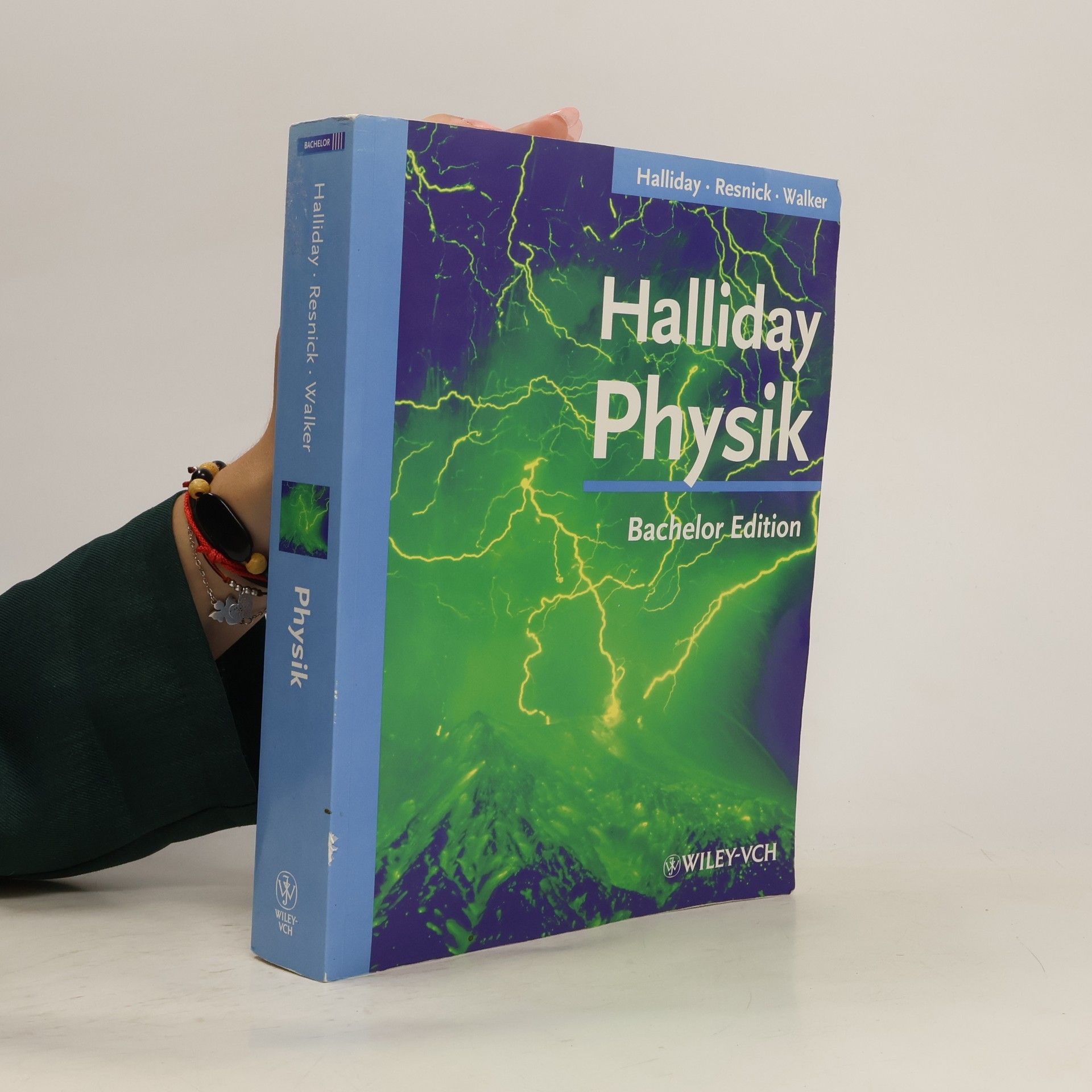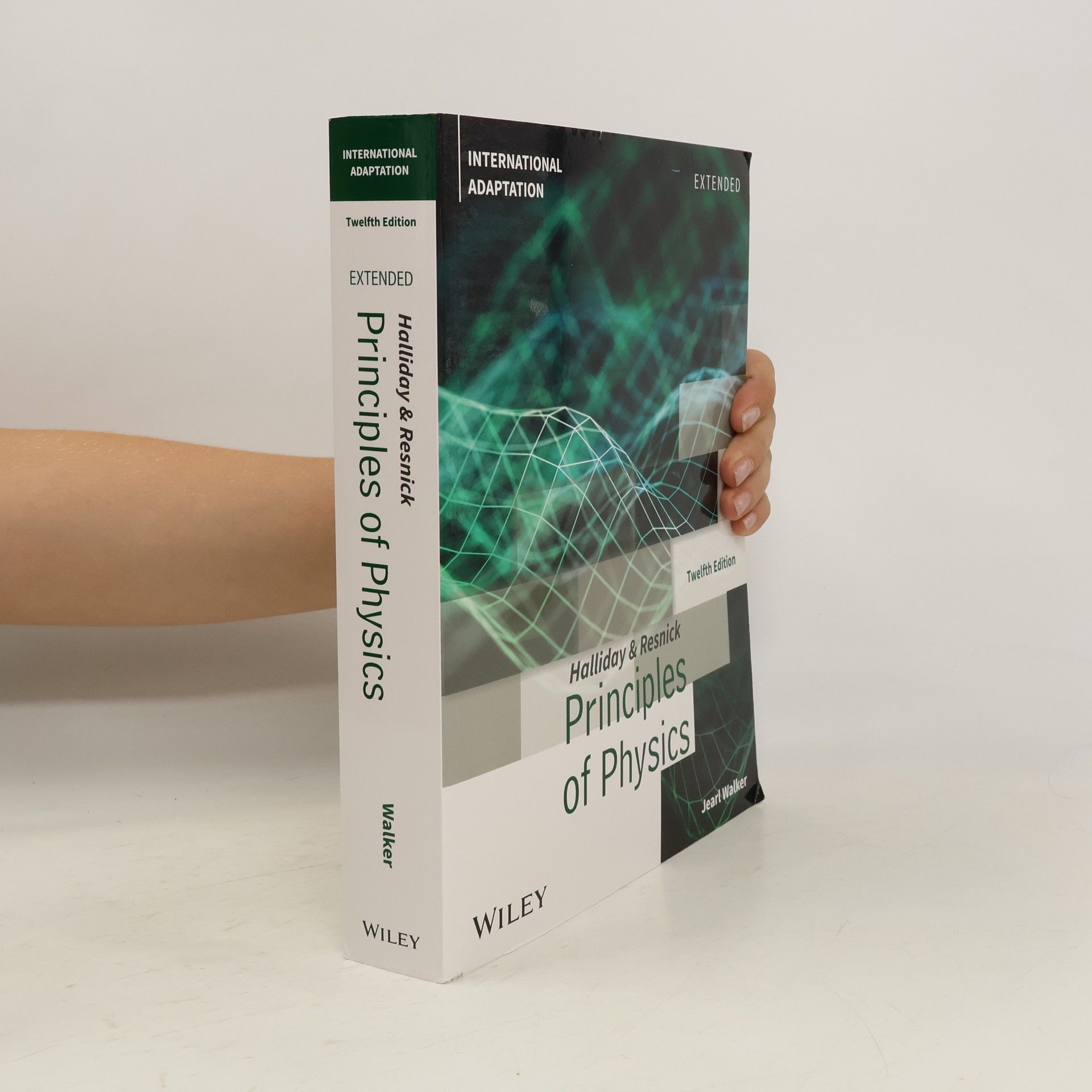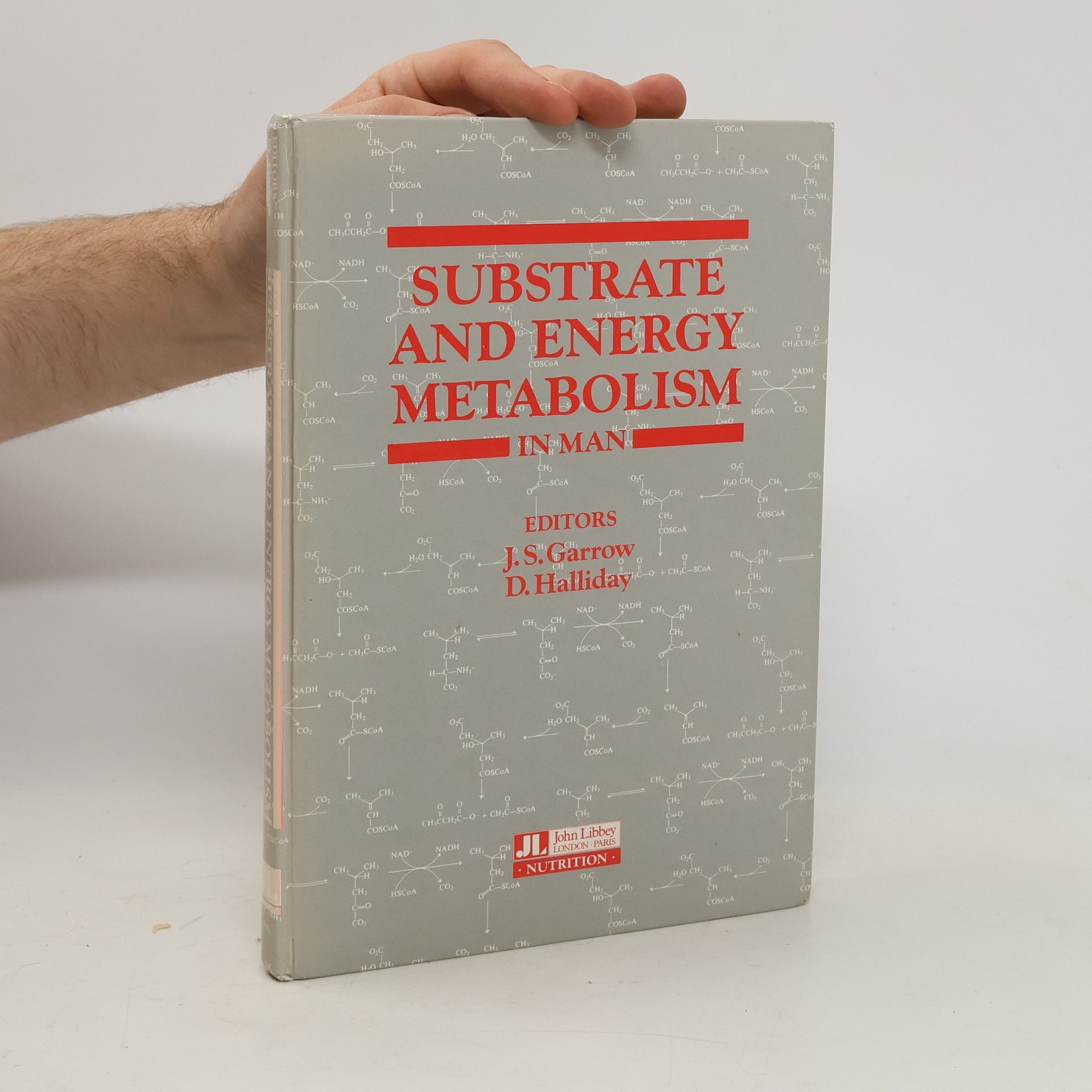Substrate and Energy Metabolism in Man
- 278 pages
- 10 hours of reading
David Halliday was an American physicist renowned for revolutionizing physics education. His influential textbooks are celebrated for their clear, standardized diagrams, exceptionally thorough yet highly readable pedagogy, and insightful introductions to modern physics. These works, continuously in use since the 1960s and translated into numerous languages, are recognized for their challenging, thought-provoking problems and were named the most outstanding introductory physics text of the 20th century.






Focusing on conceptual understanding, this edition offers an interactive approach to learning physics, making complex subjects accessible. It emphasizes contemporary research areas and provides tools that enhance active learning. Students are guided in reading scientific texts, identifying key concepts, reasoning through questions, and solving quantitative problems, ensuring a comprehensive grasp of physics principles.
Focusing on building scientific literacy and logical reasoning, this textbook excels in teaching calculus-based physics through thematic modules and clear learning objectives. The 11th edition includes a curated selection of challenging end-of-chapter problems, ensuring students grasp essential concepts while developing superior problem-solving skills. With a user-friendly approach, it engages learners by connecting physics to real-world applications, making the material both stimulating and relevant.
Frontmatter -- Vorwort zur deutschen Übersetzung -- Inhaltsübersicht zu Teil 1 und Teil 2 -- Inhalt -- Teil 1 -- 1. Über das Messen -- 2. Vektoren -- 3. Eindimensionale Bewegung -- 4. Bewegung in einer Ebene -- 5. Dynamik I -- 6. Dynamik II -- 7. Arbeit und Energie -- 8. Erhaltung der Energie -- 9. Erhaltung des Impulses -- 10. Der Stoß -- 11. Die Drehbewegung -- 12. Drehmoment, Drehimpuls und Trägheitsmoment -- 13. Erhaltung des Drehimpulses -- 14. Gleichgewicht starrer Körper -- 15. Schwingungen -- 16. Gravitation -- 17. Statik der Flüssigkeiten und Gase -- 18. Dynamik der Flüssigkeiten und Gase -- 19. Wellen in elastischen Medien -- 20. Schallwellen -- 21. Temperatur -- 22. Wärme und der erste Hauptsatz der Thermodynamik -- 23. Kinetische Gastheorie I -- 24. Kinetische Gastheorie II -- 25. Entropie und der zweite Hauptsatz der Thermodynamik -- Ergänzungen -- Anhang -- Sach- und Namenverzeichnis
část 1. Mechanika. 328 s. -- část 2. Mechanika - Termodynamika. s. 330-576 -- část 3. Elektřina a magnetismus. s. 578-888 -- část 4. Elektromagnetické vlny - Optika - Relativita. s. 890-1032 -- část 5. Moderní fyzika. s. 1034-1198..Osvědčená a moderně zpracovaná učebnice vhodná pro základní kurs fyziky na vysokých školách. Text učebnice je dobře srozumitelný a umožňuje pochopení jevů a zákonitostí. Výklad motivuje ke studiu každé partie, je uvedena i řada praktických aplikací odrážejících současný stav poznání a technologií. Struktura všech 45 kapitol je stejná: podmanivá fotografie na začátku prezentuje vždy nějaký problém z všeobecného života, který dokáže vysvětlit právě fyzika z této kapitoly. Výklad, ilustrovaný barevnými schématy, náčrtky i fotografiemi je použit v podrobně řešených vzorových příkladech. Následuje krátká kontrolní úloha, jejíž vyřešení (výsledek je na konci knihy), ujistí čtenáře, že látku pochopil správně a může pokračovat. Po heslovitém shrnutí obsahu kapitoly následují otázky ke kapitole a úkoly a problémy pro samostatné řešení. Odpovědi na otázky, výsledky úloh a problémů jsou uvedeny na konci knihy spolu s dodatky.